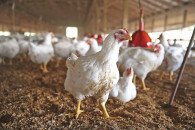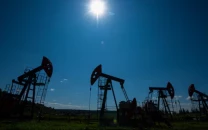Captive power scam: NAB seeks records from power and gas utilities
Reports allege companies sold power fraudulently to the national grid.

NAB had also blasted government officials over providing gas to inefficient captive power plants at subsidised rates, which later sold that electricity to the government at higher rates. PHOTO: FILE
NAB has also sought the detailed tariff rates applicable on captive power plants, the price at which gas is sold to them, the changes in priority of gas allocation to the industry, and the reduction in efficiency benchmarks made by the past government to allegedly favour certain business tycoons.
In a recent development, NAB had also blasted government officials over providing gas to inefficient captive power plants at subsidised rates, which later sold that electricity to the government at higher rates.
An official said that government was receiving power at Rs5.20 per unit from captive power plants that run on gas, and there was little chance of malpractice in this regard. However, he said that captive power plants operating on furnace oil may be involved in selling power to the government at higher rates, while using cheaper electricity from the national grid for industrial units.
NAB has also sought details regarding the efficiency of captive power plants. Caving in to pressure from the textile industry, the past government had slashed proposed minimum energy efficiency benchmarks for captive power plants and natural gas boilers.
In a guideline provided to gas utilities, the petroleum ministry had set a 50% efficiency benchmark for combined cycle plants and a 60% benchmark for gas engines and turbines based on cogeneration technology. During last days of its tenure, PPP government revised the proposed energy efficiency benchmarks downwards to 35% for combined cycle plants and 45% for cogeneration plants.
The past government had also shuffled the gas allocation priority for captive power plants. They had been put at fourth priority by the Economic Coordination Committee; but in the last days of the PPP government, the priority order was changed and captive power plants were mysteriously bumped up to number three. The NAB now questions this change and has sought a justification for it.
Meanwhile, the power sector, which had been placed second in the priority order, is still not being provided sufficient gas. “Even new power plants with 54% efficiency rates – such as Saif, Orient and Halmore – remain either shut down or are operating on high-speed diesel, generating expensive power due to a shortage of gas,” an official of the water and power ministry said. These three plants have a combined generation capacity of over 900 megawatts.
Published in The Express Tribune, April 26th, 2013.
Like Business on Facebook to stay informed and join in the conversation.



















COMMENTS
Comments are moderated and generally will be posted if they are on-topic and not abusive.
For more information, please see our Comments FAQ